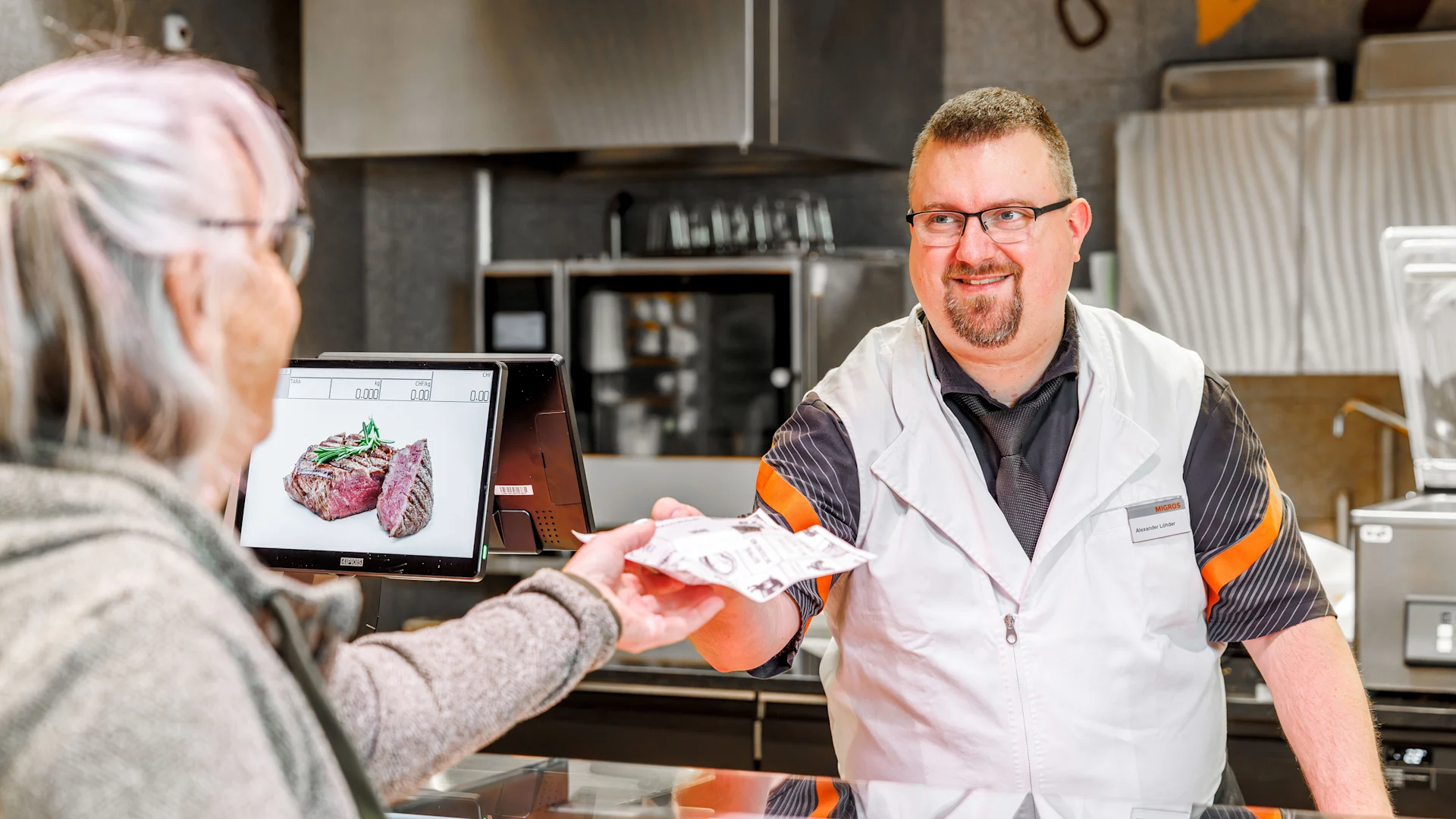
Supermarket
A look behind the meat counter
What customers want in the run-up to the festive season and the mistakes many people make when preparing meat.
navigation
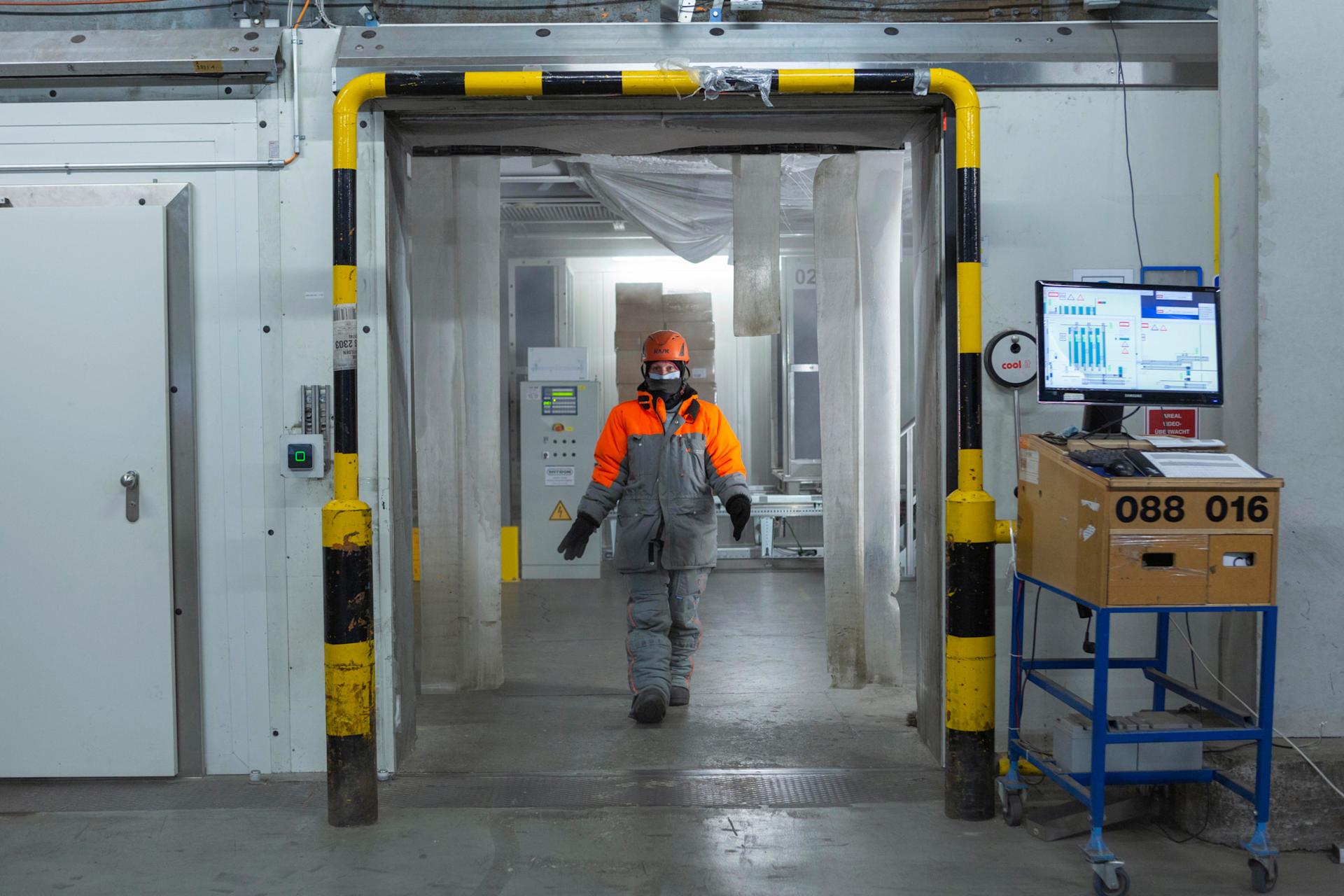
The job in the deep-freeze warehouse
Claudia Sollberger works below freezing. In the huge deep-freeze warehouse of the Migros distribution plant Neuendorf AG, she makes sure that all Migros frozen products end up in the right place. And every now and then she works up quite a sweat.
She doesn’t particularly like the cold. In this respect, Claudia Sollberger isn’t all that different from most people. Her working environment, on the other hand, clearly is: the 54-year-old works in frozen food logistics at the Migros distribution facility in Neuendorf, where all of Migros’ frozen products are stored. There, temperatures between minus 24 and minus 26 degrees prevail.
«But it can also smell like food in here – for example, when packages of curry bowls or cauliflower whizz by, you notice it right away.»
Before starting her shift, Sollberger therefore puts on thermal underwear, ski socks, two caps and special protective clothing consisting of trousers, boots and a coat. She also wears two pairs of gloves and usually a warming fleece snood around her neck. This now makes way – in pandemic times – for the obligatory mask, because the protective measures also apply in the freezer. All dressed up, Sollberger stands in the anteroom of the deep-freeze warehouse. Shift change! Her colleagues come out through the steaming sliding door and discuss with her and her shift mates what’s on the agenda. Then it’s time: hard hat on and in through the steaming door.
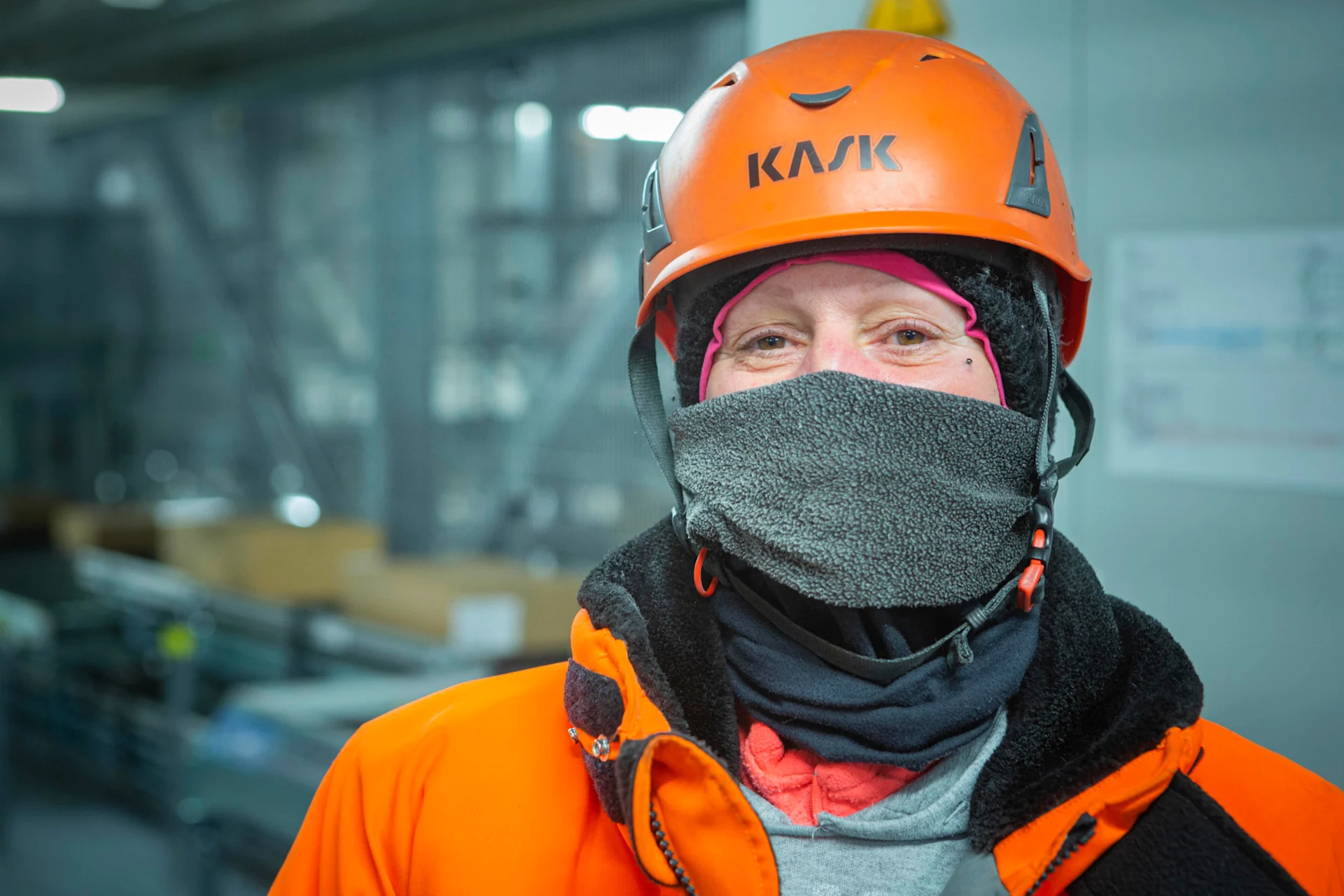
Inside the warehouse, which is about 11 metres high, bright neon lights shine and there are shelves as tall as the ceiling, filled with brown cardboard boxes of all sizes. Packages and pallets whizz around the shelves on conveyor belts. The warehouse smells like the deep-freeze air that wafts towards you when you briskly open the freezer door. «But it can also smell like food in here – for example, when packages of curry bowls or cauliflower whizz by, you notice it right away,» says Sollberger.
The whizzing boxes and pallets generate a lot of noise and wind. Still, the cold is not unpleasant. «Because it is dry. That’s why you only feel it slowly,» says Sollberger and inquires about the author’s fingers. Wrapped in thick gloves, these are still warm. Sollberger nods with satisfaction and makes her way up a flight of stairs to the order picking area.
There, a huge, fully automated facility sorts the delivered goods and stores them in the ceiling-high shelves. Then it processes orders from the branches – also automatically. «The facility has been in operation since summer 2020 and fills around 1,700 pallets a day,» explains Michael Odermatt, who heads the Automation and Projects department in Neuendorf. It only stands still at the weekend for just under a day. «However, when the temperatures rise quickly after Easter, it’s high noon for us. Then everyone wants ice cream and the facility runs around the clock.»
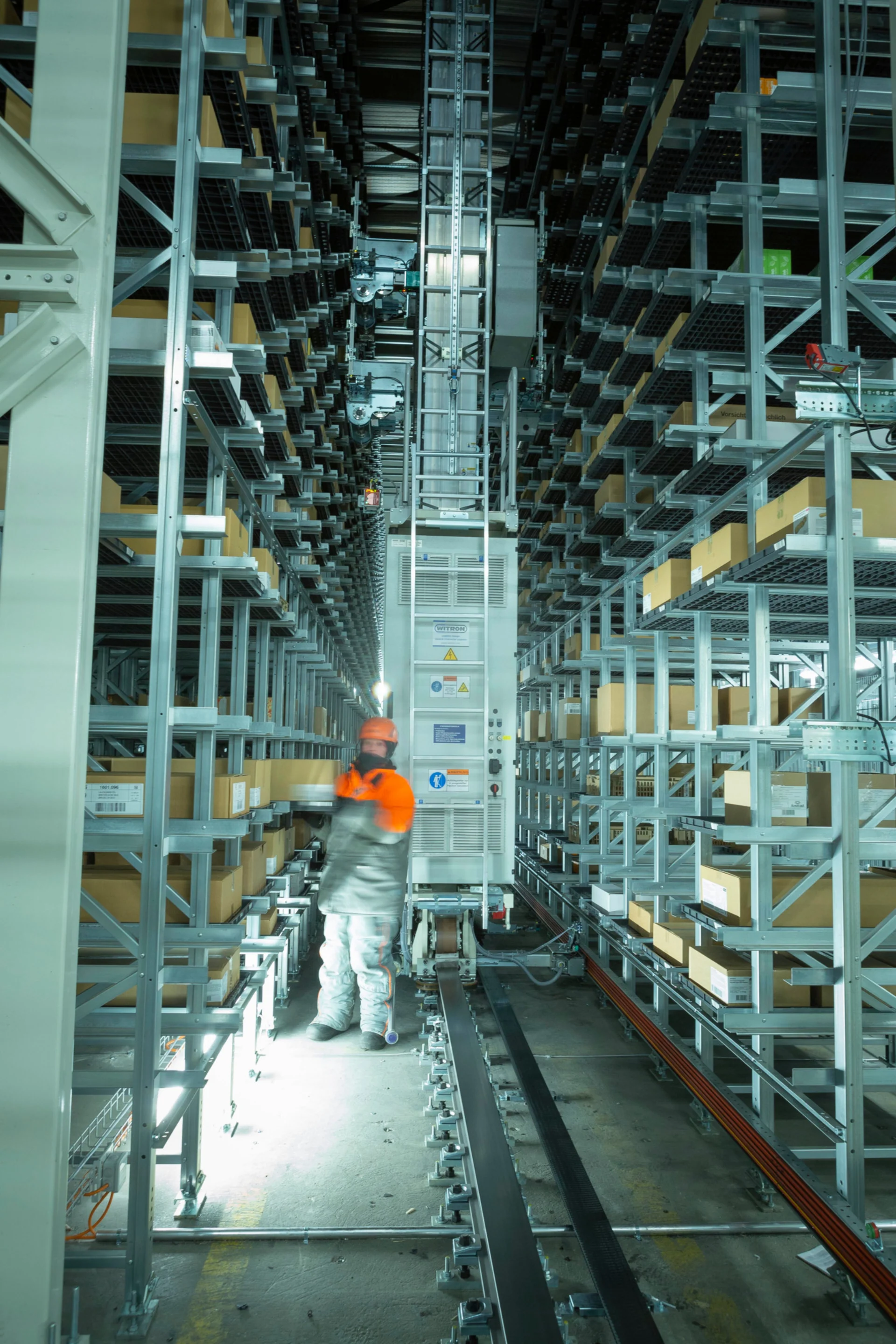
The job of Claudia Sollberger and her almost 40 colleagues is to monitor the facility and intervene in case of malfunctions. «For example, if the smallest package in a delivery is in the first place on the conveyor belt, the machine displays a warning, we stop the belt, and manually place the package in the right place,» she explains as she does just that. Correctly sorted, the parcels whizz towards the waiting pallets, one for the Ipsach branch, one for Mett, one for Bötzingen. When the delivery for Biel has also whizzed through and is stacked on the pallet, Sollberger walks on, up a flight of stairs to the next station. A questioning look back at the author: The hands? Icy by now, after only a few minutes.
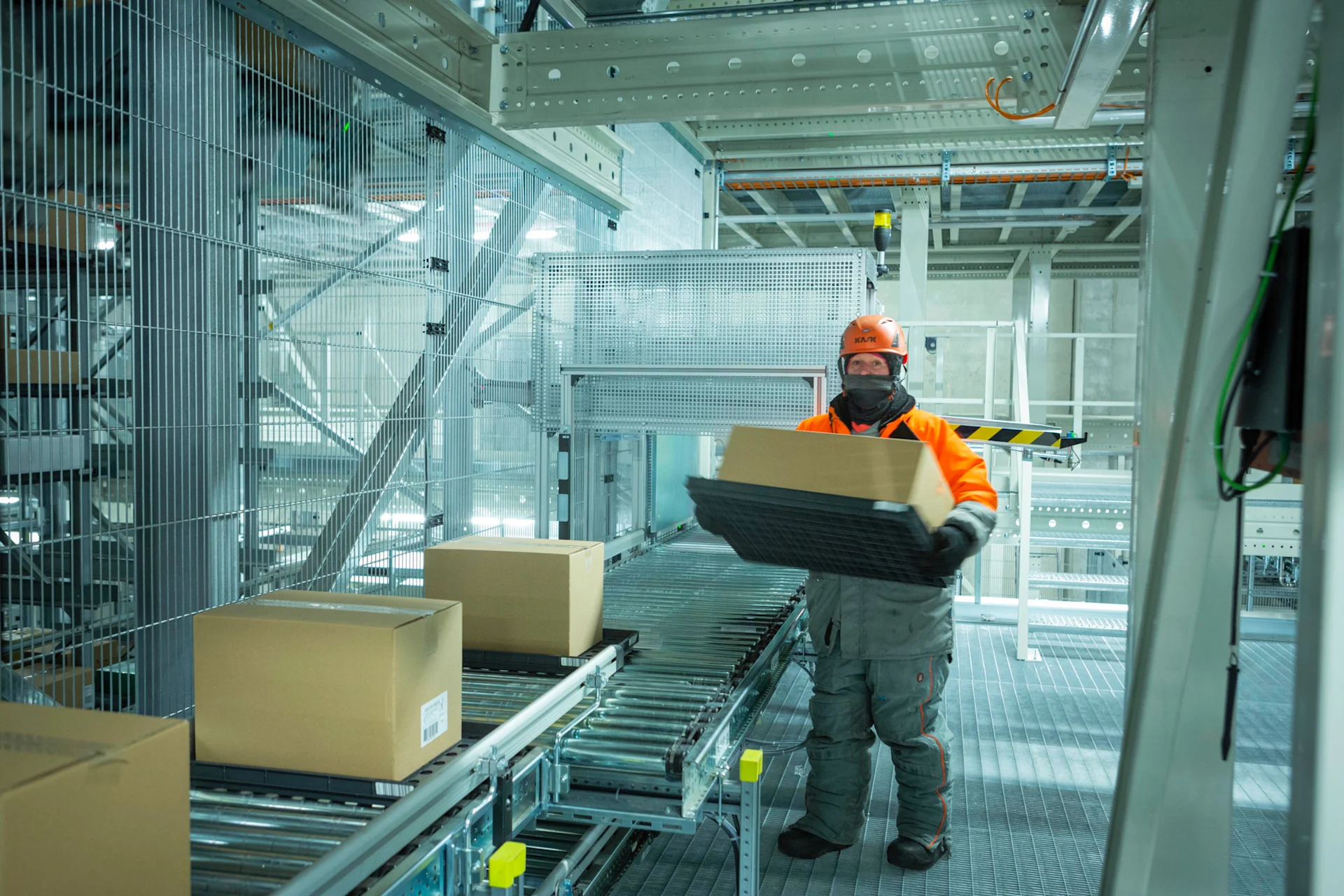
«Now it’s time to get married,» says Sollberger, arriving at the top. Excuse me? Under the warehouse ceiling, where the ventilation pipes pump in the coldest air, at minus 28 degrees, each brown cardboard box is given an underlay so that it runs through the facility more smoothly. «We call it a wedding because two singles become a couple,» Sollberger says with a laugh. And what is actually inside the brown boxes? Colleague Odermatt explains: «About 40 per cent of the products are bread. First and foremost the Tessinerli loaf. But we also store all the other frozen products that are available in the Migros product range. The seal ice lollies, too, of course.»
It is a lot colder in the facility than the minus 18 degrees needed for deep-freezing. This is to ensure the safety of the goods. «If the goods were left outside for two hours at 0 to 5 degrees, their core temperature would still be minus 20 degrees.» Colder is always fine for the products. But the people – and also the facility – are happy about every degree of warmth. In the facility, the oil and the cables in particular are specially designed for the cold.
«It took a while for the colleagues to warm up.»
Claudia Sollberger does the finger check again: suddenly they are warm again. She is pleased. «Now you’ve crossed the pain threshold and overcome the cold. If you can’t do that, then this job is impossible.» Nevertheless, she adds that you never completely get used to the cold, at most you learn how to deal with it. After a first trial week, she was in any case certain: «No, it’s not going to be my next job.» So she wanted to return to the «normal» distribution centre next door, where the trained hospitality assistant had already worked for 10 years previously. «But somehow I couldn’t give up so quickly and tried again.»
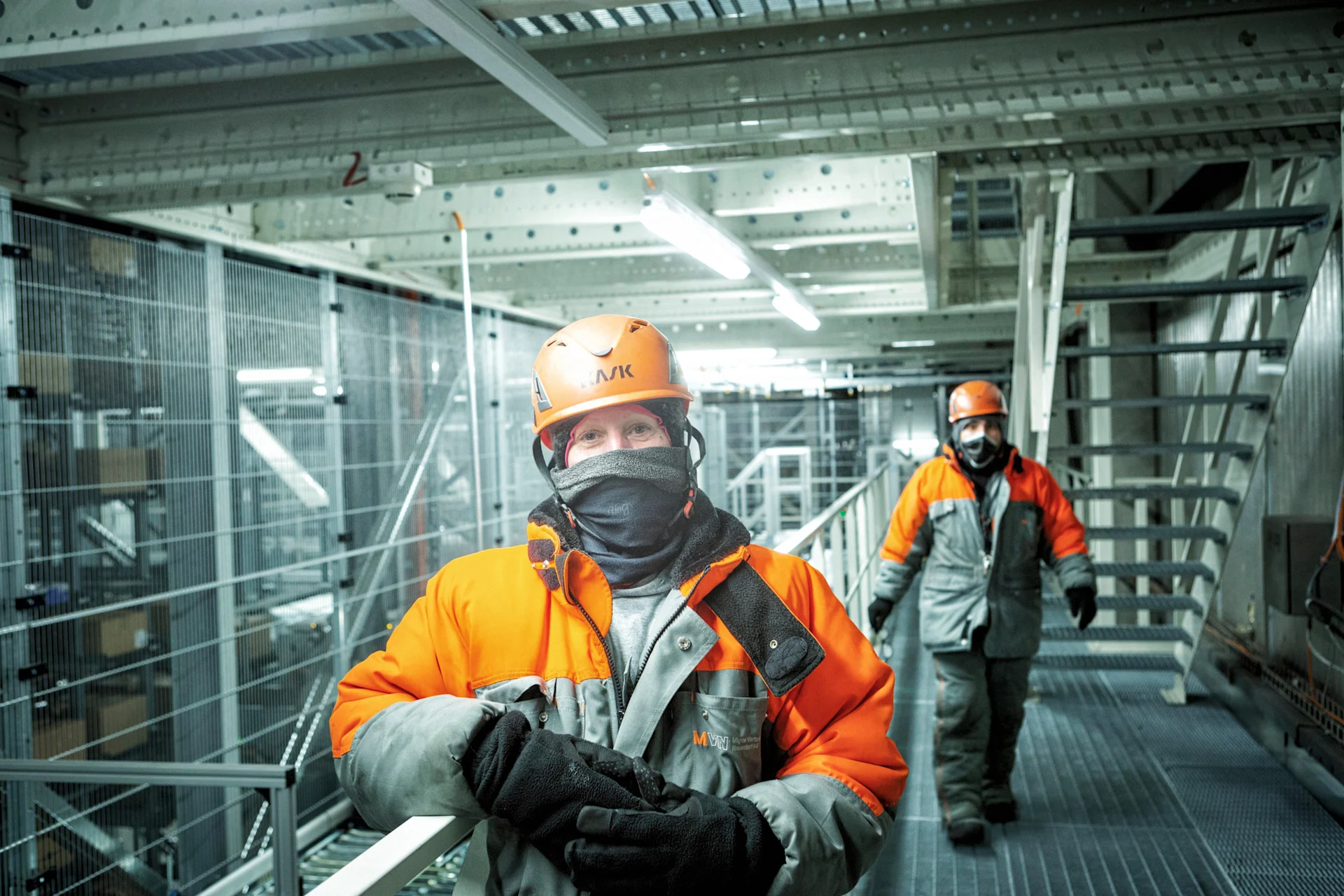
By now, Sollberger has been working below freezing for five years. After about two months she was acclimatised and realised that you can sweat even at minus 26 degrees. «If several warning lights are flashing at the same time and I take the stairs in a hurry, it won’t take long!» The colleagues were actually tougher to deal with than the cold: the job in the freezer is a male domain. «A woman can’t do that,» they said, Sollberger was one of the first. «It took a while for my colleagues to accept me. But they warmed up to me eventually.»Despite the temperatures.
Currently, there are only two other women working at the facility besides Sollberger. This is not primarily due to the cold, because contrary to preconceptions, women cope better with it than men: rather, it is probably due to the shift work, which isn’t always easy to organise, especially if you have children, the grandmother of three knows.
After making sure everything goes smoothly at the wedding, she heads back downstairs. There she exchanges a few words with her colleagues and then makes her way towards the entrance, towards the steaming door. This also pleases the author. Because although her hands are warm again, her toes have definitely taken a leave of absence.
A shift in the deep freezer lasts 8 hours, but every 90 minutes there is a mandatory 15-minute heat break. That’s enough to warm up, even now in winter. Although the temperature fluctuations to the outside world are smaller in winter, Claudia Sollberger prefers to work in summer. «When I get into the overheated car after work, I don’t sweat. I’m basically a human air conditioner. It’s so convenient.» And anyway, she is still cold outside in winter. She doesn’t like it.
Whether at a desk, in a store or in a laboratory – our work environment is diverse, just like the people behind it. Discover their stories.